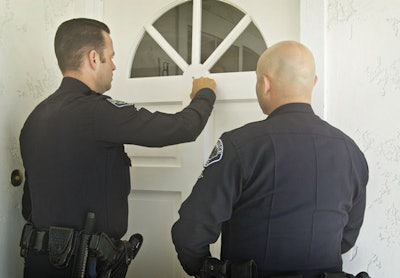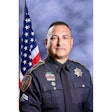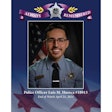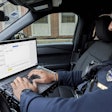 Photo: Vince Taroc
Photo: Vince Taroc
Every year, the U.S. Supreme Court receives thousands of petitions to review lower court rulings. Typically, the court grants between 80 and 125 of these to be decided during its nine-month term (October through June). Once a case is accepted for review, the attorneys for both sides submit briefs according to a standard schedule. The justices read these briefs, and then schedule oral argument (argument is limited to half an hour for each side in most cases). Within a few months after arguments are heard and the court issues its decision, which is sometimes unanimous, but more frequently is divided—often by a 5 to 4 vote. This process can take a year or longer.
Infrequently, the court looks at the petition for review and sees that on its face the lower court decision is so clearly and obviously wrong that no briefing, oral argument, or further deliberation is necessary. In a single order, the court grants the petition for review and issues a unanimous ruling reversing the lower court decision. When this happens, it essentially sends a message to the judges in the lower court that their decision was so blatantly wrong as to merit summary reversal. It happened in the 2012 term in a civil rights lawsuit against police officers.
Ryburn v. Huff
Two Burbank (Calif.) Police Department officers were called to a high school where the principal reported that a student, Vincent Huff, was rumored to have written a letter threatening to "shoot up" the school. Many parents were keeping their children at home. Vincent himself had been absent for two days; other students reported that he was frequently subjected to bullying. Based on their training and experience, the officers recognized these signs as being characteristics that are common among students perpetrating school shootings.
The officers went to Vincent's house to try to interview him. When there was no response to their repeated knocks and announcements, they tried phoning the residence. They could hear the phone ringing inside, but no one answered. One of the officers then called Mrs. Huff's cell phone. When she answered, the officer identified himself and asked where she and Vincent were. She said they were both inside the home, and then she hung up.
A few minutes later, Mrs. Huff and Vincent came out onto the front steps. The officers explained why they were there, and Vincent said, "I can't believe you're here for that." His mother showed no surprise when told of the reported threats by her son. Officers asked to continue their discussions inside; Mrs. Huff refused. When an officer then asked if there were any guns in the house, the pair immediately turned and ran back inside.
In view of all the facts known to them, the officers felt compelled to make immediate entry for officer safety, because of the risk that an occupant might grab a gun and start shooting. The officers talked to Vincent and his mother for a few minutes and then left, since no crime had been committed.
Vincent and his mother and father sued the officers, alleging illegal warrantless entry into their home, in violation of the Fourth Amendment. The trial court found the officers' entry objectively reasonable based on all the circumstances and dismissed the suit. The Huffs appealed to the Ninth Circuit of the U.S. Court of Appeals, which reversed the dismissal and reinstated the lawsuit.
The majority opinion of the Ninth Circuit looked at each individual factor, found that each one was innocent conduct, and held that the officers' entry violated the Fourth Amendment. As to the last event that occurred before the entry—Mrs. Huff's turning abruptly and running inside when asked about guns—the Ninth Circuit majority said that there was no suspicion of danger attached to this act because "she merely asserted her right to end her conversation and return to her home." The officers appealed this decision to the Supreme Court.
In a unanimous ruling, the Supreme Court issued a single order granting review and summarily reversing the Ninth Circuit's decision. No briefing. No oral argument. No extended deliberation. No dissenting opinions. In essence, the Supreme Court was saying that the Ninth Circuit's decision was so blatantly wrong on its face that it could not stand.
The court said this: "Confronted with all of the facts, reasonable officers could have come to the conclusion that there was an imminent threat to their safety and to the safety of others. The Ninth Circuit's contrary conclusion was flawed for numerous reasons. The panel majority seems to have taken the view that conduct cannot be regarded as a matter of concern as long as it is lawful. However, there are many circumstances in which lawful conduct may portend imminent violence.
"The Ninth Circuit's analysis was entirely unrealistic. With the benefit of hindsight and calm deliberation, the Ninth Circuit concluded that it was unreasonable for the officers to fear imminent violence. But judges should be cautious about second-guessing a police officer's assessment made on the scene, rather than with the 20-20 vision of hindsight. Officers are often forced to make split-second judgments in circumstances that are tense, uncertain, and rapidly evolving." (Ryburn v. Huff)
The Supreme Court remanded the case to the Ninth Circuit "for the entry of judgment in favor of the officers." The Ninth Circuit then remanded to the trial court, "to comply with the United States Supreme Court decision." Case dismissed.
Prior Record
The ruling in Ryburn was at least the third time the Supreme Court has reversed the Ninth Circuit on the fallacy of holding that innocent acts cannot justify police suspicions. In a 1989 case involving multiple suspicious factors, the Supreme Court had reversed the Ninth Circuit on the same point—namely, that conduct need not be criminal to be suspicious. In that ruling, the Supreme Court had faulted the Ninth Circuit for holding that factors indicative of a drug courier profile could not add up to reasonable suspicion for a detention, because they were consistent with innocent behavior.
Said the court: "Any one of these factors is not by itself proof of any illegal conduct. But we think taken together they amount to reasonable suspicion. Innocent behavior will often provide the basis even for probable cause. It is not whether particular conduct is 'innocent' or 'guilty,' but the degree of suspicion that attaches to noncriminal acts." (U.S. v. Sokolow)
Again in 2002, the Supreme Court reversed the Ninth Circuit on the same point. Looking at a Border Patrol officer's detention of a vehicle on a known drug route from Mexico into Arizona, the Ninth Circuit held that the factors listed by the officer were instances of innocent conduct and did not justify stopping the van (which was loaded with marijuana). Overturning the Ninth Circuit, the Supreme Court said bluntly: "A determination that reasonable suspicion exists need not rule out the possibility of innocent behavior." (U.S. v. Arvizu)
Bottom Line
If you articulate circumstances that are suspicious, based on your training and experience, you should not be second-guessed by judges on the ground that the conduct you considered was just a combination of innocent acts.
Devallis Rutledge is a former police officer and veteran prosecutor who currently serves as special counsel to the Los Angeles County district attorney. He is the author of 12 books, including "Investigative Constitutional Law."
Related:
SCOTUS: Officers Justified In Entering Teen's Home















